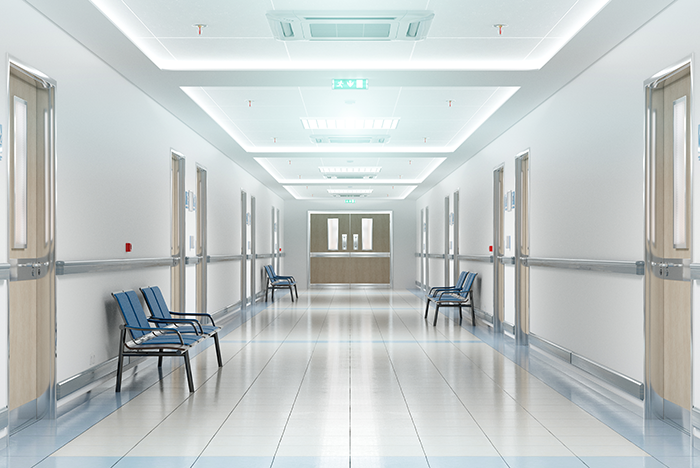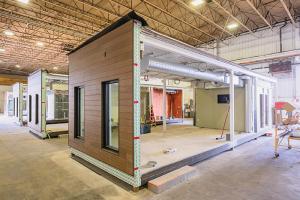The new rules of health care readiness

Medical organizations are putting a greater emphasis on restoration companies who know the ins and outs of working safely in health care spaces.
Image from Getty Images
In the wake of the COVID-19 pandemic, hospitals across the country have had to reevaluate what it means to be truly “patient-ready.” Clinical preparedness is no longer measured only by the skill of medical staff or availability of equipment. Increasingly, it is tied to how well a facility’s infrastructure can protect patients, staff and the community during both routine operations and emergencies.
But COVID-19 was not the only driver of change. Health care-associated infections (HAIs), aging facilities and extreme weather events have all played a role in shifting expectations. The built environment now plays a critical role in the broader public health ecosystem, and that means new standards, new responsibilities and a more strategic lens on how hospital systems manage restoration, repair and construction-related activity.
Infrastructure as infection control
Until recently, many hospitals treated infrastructure issues such as flooding, fire damage or renovations as operational challenges. Today, those same issues are viewed through a clinical lens. How a hospital responds to a water loss or conducts mold remediation can directly influence infection risk and patient safety outcomes.
This evolution is visible across the compliance landscape. Accrediting and regulatory bodies have sharpened their focus on construction processes and procedures, indoor air quality and safety protocols during disruptive events. Now more than ever, health care leaders are tasked with a broader responsibility: ensuring that all teams and vendors working inside the facility, not just clinical staff, operate with the same standards of precision and care.
This heightened scrutiny is changing how hospitals select partners, monitor internal systems and maintain continuity. It is also reinforcing that facility conditions are not a background concern, but a frontline determinant of health outcomes.
Redefining readiness: risk, recovery and resilience
Hospitals are under increasing pressure to maintain uninterrupted, high-quality care environments, even amid chaos. Restoration, in this context, becomes more than a matter of fixing what is broken. It becomes an essential part of safeguarding health outcomes and ensuring continuity.
Consider the chain reaction that can occur when a localized water intrusion affects an imaging suite. It is not just about drying carpet; it is about preserving patient diagnostics, controlling microbial growth and maintaining compliance with infection prevention protocols. Every response must be calibrated with those layers in mind.
That means evaluating restoration teams not just for their technical ability, but for how they operate within a health care setting. Are they trained in working quietly and sensitively around patients? Can they collaborate with infection preventionists and facilities managers? Do they document their processes in a way that supports audit and claim readiness?
Just as health care delivery has become more integrated and patient-centric, so too must restoration. Facilities that adopt this mindset are better equipped to navigate both planned work and unforeseen emergencies with minimal disruption to care.
The quiet evolution of health care restoration
Over the past several years, a quiet transformation has taken place within the restoration industry. Some providers have embraced the need for a health care-specific approach. One that goes beyond general contracting and emphasizes containment protocols, environmental cleanliness and collaboration with compliance teams.
In these cases, restoration teams are embedded into a hospital’s broader ecosystem. They understand how airflow impacts smoke chamber designations, how negative-pressure rooms function during infectious disease outbreaks and why documentation matters just as much as drywall. And they are often working shoulder-to-shoulder with infection prevention specialists to maintain occupant safety, not just repair damage.
This evolution mirrors the broader health care industry shift toward interdisciplinary collaboration. Just as clinical teams work alongside social workers, case managers and infection preventionists to improve outcomes, restoration partners are now part of that conversation. And that inclusion is elevating standards across the board.
As one hospital facilities leader put it, “We’re no longer looking for a fix-it team. We’re looking for an extension of our infection control strategy.”
Planning for the predictably unpredictable
If the past five years have taught us anything, it is that health care facilities must be prepared for the unexpected. Whether it is a new viral outbreak, a weather-driven disaster or an infrastructure failure, readiness is no longer a nice-to-have; it is a must.
And readiness does not happen during a crisis. It is built through the right systems, relationships and protocols long before they are tested. Increasingly, forward-looking hospital systems are forming long-term partnerships with restoration teams trained in health care protocols, running mock scenarios and integrating facility recovery into broader emergency response plans.
These proactive relationships serve a dual purpose: They mitigate disruption in real time and build institutional muscle memory that can be activated when the next emergency strikes. In the process, restoration teams become as familiar with the facility’s infection prevention protocols as they are with the building schematics.
The hidden cost of downtime and the value of prevention
Beyond the physical impact, disruptions to care environments carry significant financial and reputational consequences. Downtime can lead to delayed procedures, patient relocation and even temporary closure of critical care areas. All of which affects reimbursement and trust.
For this reason, some health care organizations are conducting vulnerability assessments not just on information technology and supply chain systems but also on physical infrastructure. Questions like “Where are our most flood-prone mechanical rooms?” or “Do we have a phased plan for containment during construction?” have become part of critical planning conversations.
These efforts signal a deeper commitment to resilience. They also underscore that health care restoration, when done right, is less about disaster response and more about risk mitigation.
Looking ahead: Building a culture of resilience
The future of health care will be defined not only by advancements in medicine, but by how we protect care environments from disruption and contamination and how we respond to infrastructure failure. Restoration has a meaningful role to play in that equation, one that goes far beyond traditional perceptions.
By rethinking how restoration intersects with infection control, compliance and patient safety, hospitals can better protect the people and communities they serve. And by embedding restoration into the larger conversation around health system readiness, they create a more holistic, resilient approach to care.
Because when the next crisis hits—and there will be a next—resilience will not be defined just by how fast we recover. It will be measured by how ready we were in the first place.
Jason Bolin, SVP, Health Care Practice Leader, First Onsite.




